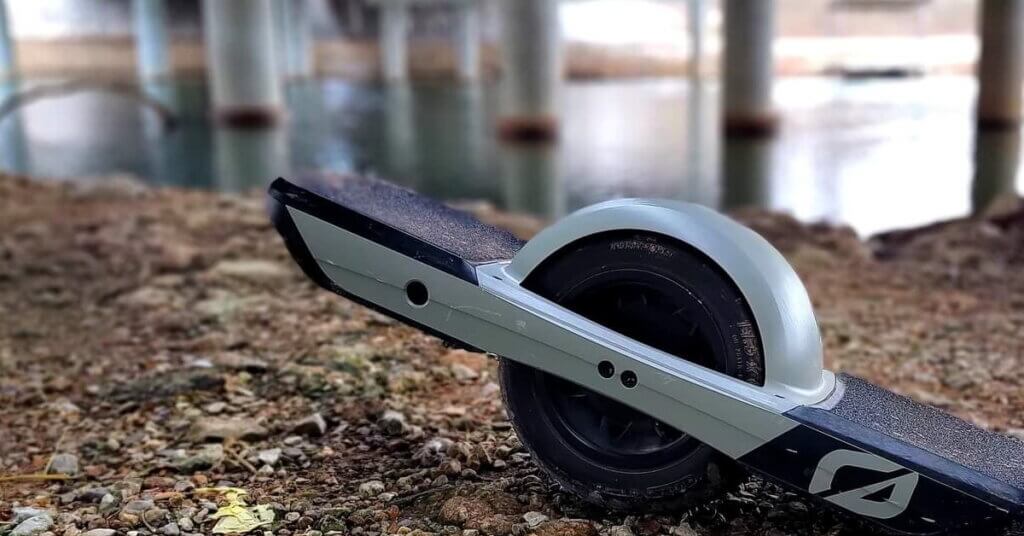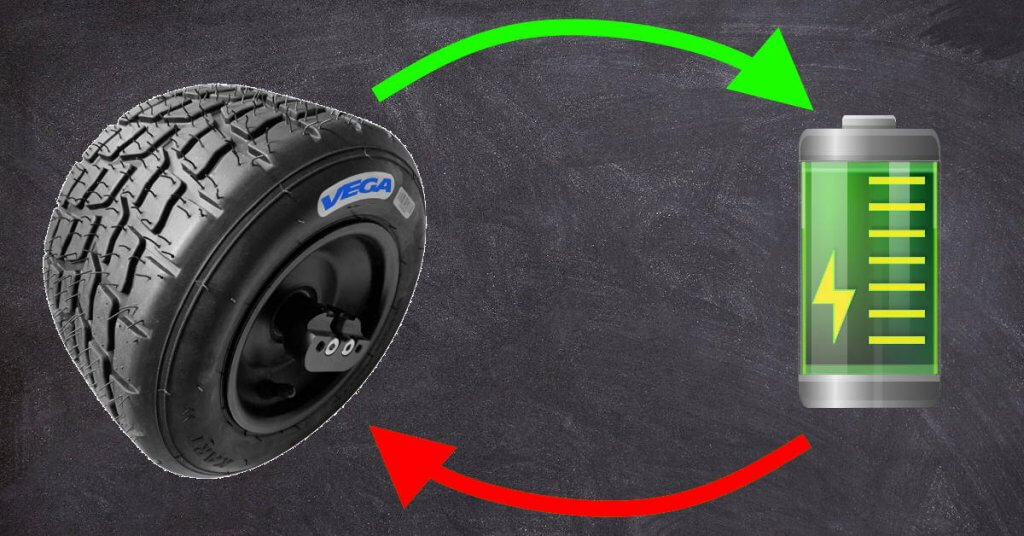Regenerative braking is not something new and electric cars, electric scooters, and boosted boards all have it. These are devices like the Onewheel is using the motor to brake and slow down. Braking while riding downhill will therefore charge up the battery, changing potential energy into stored energy.
How Onewheel Regenerative Braking Works
Regenerative braking transforms kinetic energy into electrical energy that’s then stored in the battery.
In short, the board (motor) is moving forward by applying and pushing current (from the battery) to the motor that makes it turn. If you make the wheel (motor) turn mechanically like when going downhill, it will produce roughly the same current out of the motor. Regenerative braking absorbs this current (energy) by pushing it back into the battery.
The synergy between the motor, battery, and braking mechanism unfolds as follows:
- Motor Propulsion:
- The board’s forward movement is powered by the motor, which utilizes current from the battery to set the wheel in motion.
- Mechanical Rotation:
- When the wheel turns mechanically, especially during downhill maneuvers, the motor mirrors this rotation, producing an equivalent current if breaking.
- Energy Absorption:
- Regenerative braking comes into play, absorbing the generated current or energy, and redirecting it back into the battery.
The app shows a percentage of regenerative braking you’ve done. If your app shows 10% regeneration means that you have recharged your battery 10% during the ride. That’s why usage can go over 100% thanks to regeneration and your braking.
How To Charge Your Board Living On A Hill.
There is a feature in the app for people who live up on a hill and start their ride going downhill. It will notify you when the board is at 90%. Overcharging the battery could be dangerous and you will get the ”Full-Battery Push Back”
”One thing to note about this feature is that if you have a full charge (100%) and you go down a big hill, it could over-charge the battery and this could be dangerous. So we advise to be cautious with this. We have a new feature in the Onewheel app that will notify you when your board is 90% charged. This is for riders who live on top of a hill.”
Future Motion Inc. OW team

Dos and Don’ts for Onewheel Regenerative Braking:
Dos:
- Follow App Notifications:
- Do use notifications from the Onewheel app, especially if you live on a hill. The app’s 90% charge alert is a helpful guide to prevent overcharging and potential safety issues.
- Ride Responsibly:
- Do practice safe riding habits, especially when descending long or steep hills. Avoid attempting downhill rides with a fully charged Onewheel to prevent loss of control or potential damage.
Don’ts:
- Overcharge on Downhill Descent:
- Don’t attempt to ride down a long or steep hill with a freshly charged Onewheel. Overcharging during regenerative braking may trigger the “Full-Battery Push Back” feature.
- Ignore Battery Management Notifications:
- Don’t disregard the 90% charge notification in the app. Ignoring this alert could lead to overcharging, causing safety concerns and potential issues with the battery cells.
- Disregard Safety Warnings:
- Don’t ignore safety warnings, especially when experiencing “Full-Battery Push Back.” Try and push the battery down by riding up and down or sideways before continuing downhill.

FAQ
What is Onewheel regeneration?
Regenerative braking on the Onewheel transforms kinetic energy into electrical energy that’s then stored in the battery. When the motor turns mechanically going downhill by the regenerative braking it absorbs the generated current (energy) by pushing it back into the battery.
Does Onewheel pint have regenerative braking?
Yes, Onewheel has regenerative braking. The amount of energy the board and you have moving forward is not that much, so the return from normal braking is not that much. Going downhill for a long period can give you some extra miles to ride from your battery.
Does Onewheel’s charge go downhill?
Yes, it depends on the incline. The Onewheel charges (regenerates) the battery if the motor needs to apply a braking force when going downhill. If the motor needs to use current to keep the speed the board will not charge.
Can you turn off regenerative braking?
No, it’s part of the braking mechanism. If you live on a hill turn on the battery management notification when it has reached 90% to not fully charge the battery.
What is Full-Battery Push Back?
When the battery is fully charged and you continue to charge it through regenerative braking (e.g. traveling downhill), you may experience “Full-Battery Push Back.”
This is to prevent overcharging the battery cells. If this happens, simply switch your Onewheel OFF and ON again and travel up the hill for a few moments to expend some of the charge. You will now be able to continue riding downhill.
⚠️WARNING: Never attempt to ride down a long or steep hill with a freshly charged Onewheel. Loss of control or damage to our Onewheel may occur.


